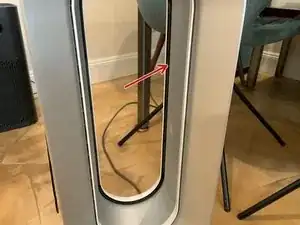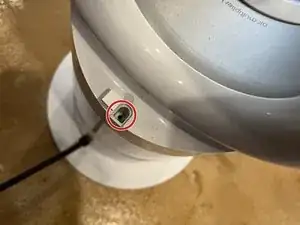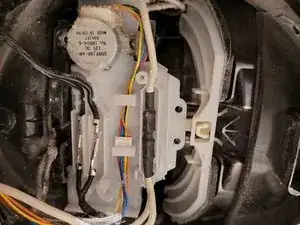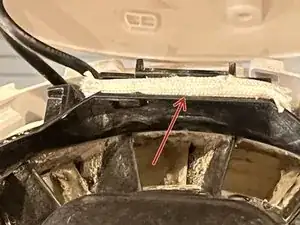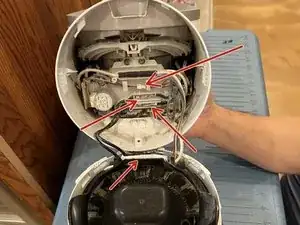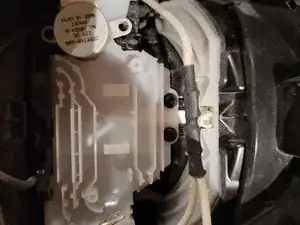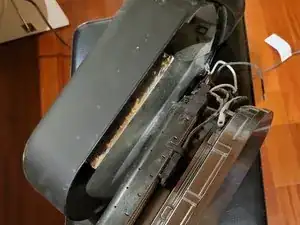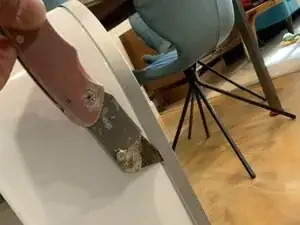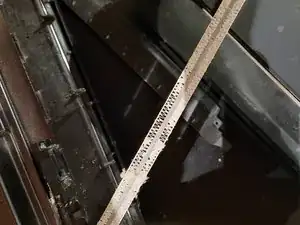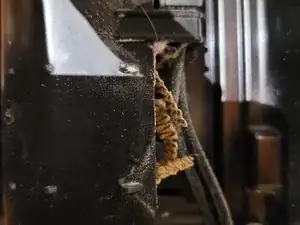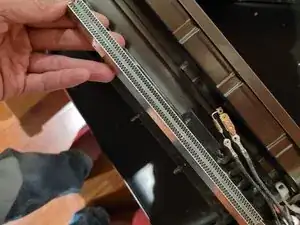Einleitung
Werkzeuge
-
-
To open the area we wish to clean, you should set the fan to high and to cool. After doing this, you can blow compressed air into the area shown on the photo.
-
-
-
Firstly, remove the D-shaped screw cover at the base of the oval by pulling upwards on it. Underneath, there is a T8 screw which must be removed to proceed.
-
-
-
This part twists about 15 degrees to unlock, then separates easily. The twist direction to unlock is conventional for a (right handed) bolt or nut - counterclockwise relative to the part below. Gripping the cylindrical base by hand to do this is not easy. Fortunately, my device has a grippy finish, so it was easy to use a belt as a strap wrench.
-
-
-
You may find it easier to work with the cables if you release the fan core from the tilt stage, by removing the four T8 screws underneath the fan core (two each accessible at each maximum tilt orientation).
-
-
-
Two T8 screws hold down the cover over this. The blade connectors have a little tab lock that must be pushed while pulling them apart. black: temperature sensors, white: heater power (disconnects near the base, under a woven sleeve that slides out of the way. You don't need to touch the heatshrink). The servo connector pulls apart easily.
-
The arrows show the 4 places to disconnect the wires so you can separate the top from the bottom. The white connectors under the sheath may also have a tiny lock tab that you need to push in while pulling them apart.
-
-
-
There are two bolts holding the servo down (removed in this photo), and two holding the white plate down. It is not necessary to remove these, but might make things a little easier a couple steps from now.
-
-
-
Use a boxcutter to repeatedly score around the sides and top of the outside trim, in order to gain access to the heater cores. This is glued in place, but around the bottom it is a small amount of glue, so if you completely separate the top and sides you can break the glue at the bottom. The air slot core with heaters will slide out.
-
Be very careful here. Use the thinnest blade possible and repeatedly score rather than doing it forcefully but you really need to get to the base for it to separate. This is hard to without damaging it.
-
-
-
Two bolts allow you to pull the heater slot cover, which allows you to remove the heater cores. They can be turned out without bending any of the tabs. The same is true of the temperature sensors. The caked on (and toasted) dust can be simply vacuumed off.
-
To reassemble your device, follow these instructions in reverse order. Tape the air slot assembly to the outside of the outer housing, or simply ziptie the top of the loop.
8 Kommentare
Hey, thanks for posting this. I used it as a general guide for my Dyson AM01 which also was throwing an error when using the heat function. Opened it up expecting to find and least some dust on the heating elements… and to my surprise and annoyance they were basically clean.
Any thoughts or other ideas? Not sure if there is a temp sensor incorrectly reporting the temperature of the heating elements that I can try to replace?
Thanks
David -
Hi All, thanks for the walkthrough on opening up the heating elements. Same as David, I put up filters around the air intake since day 1 of owning the unit and the elements are clean without any clogs. (Confirmed once I opened up the unit).
I still get the H2 error whenever I use the heating function, I noticed that if I turn it to around 23-24C with the lowest fan speed, the H2 error may not come on. And often time I cannot increase fan speed probably due to some issues with the circuit board or components. I'm suspecting that the H2 error may be due to electrical/component failures because I have 2 units and both experienced H2 error.... I'm suspecting that they were built to have a life timer or something, and when the time comes, it'd fail no matter what.
Did some digging around on the components and it seems that the 2 components next to each heating elements are thermal switch and thermal fuse, I think that's just for safety purpose and they're not heat or flow sensors.
cAL -
Yea I had actually unplugged the heating elements and set it to heat and still sometimes got that H2 error, which means its not from overheating... since it literally wasn't heating up then :(
David -
